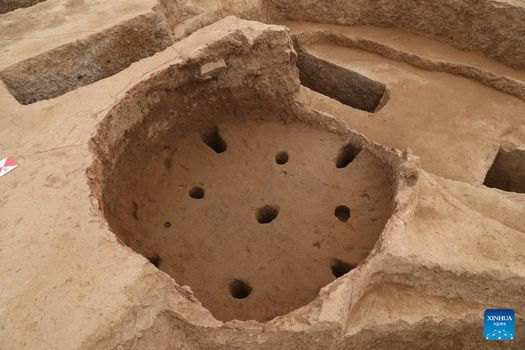The discovery of a Chinese village that is more than 3 thousand years old

Discover ceramics, pottery and carved hairpins-pexels.
A Chinese scientific mission has found the ruins of a village dating back more than 3,000 years in the northern province of Hebei. The village, located in the current Chaoyao Village of Wu'an City, covers an area of about 220,000 square meters. It was built in the middle of the Shang Dynasty (1600-1046 BC). In the medium-sized village , archaeologists have found ruins of roads, ditches, pottery kilns, waterways, cellars, and rows of houses. According to the (news.cn) website, there have been many archaeological discoveries in China during the recent period. This village, which is located in the current Chaoyao city of "Wu'an", covers an area of about 220,000 square meters, and was built in the middle of the Shang Dynasty (1600-1046 BC). .
Contents of Chaoyao Village

The ruins of a village dating back to more than 3,000 years have been found in north China's Hebei Province.
Ceramics, pottery, hairpins carved with bone, and pieces of tortoiseshell used for divination have all been discovered. In addition, a heating system was found inside each house, which is believed to be a prototype of the traditional Chinese kang, or adobe sleeping platform.
In the medium-sized village were found ruins of roads, ditches, pottery kilns, waterways, cellars and rows of houses, pieces of pottery work, and turtle shields that were used for divination and divination purposes. In addition; A heating system was found inside each house, which is believed to be a prototype of the traditional Chinese "kang," or mud-brick sleeping platform.
The village was discovered while archaeologists were excavating the Chaoyao Ruins between 2020 and 2022.
Institute of Cultural Antiquities: It may have been the capital of a kingdom

Mid-Shang Dynasty (1600-1046 BC).-pexels.
According to Wei Shuguang, head of the archaeological research department of the Shang and Zhou Dynasties at the Institute of Cultural Relics and Archeology of Hebei Province, the village may have been the capital of a tribe or kingdom at that time.
Wei pointed out that the design of the village ruins was reasonable, while the heating system can help researchers understand changes in the environment in the middle of the Shang Dynasty, as well as measures taken in northern China to help keep warm .
Source : websites

